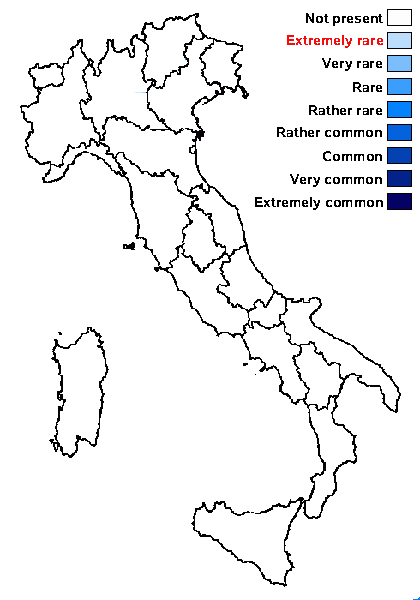Fellhaneropsis rhododendri Aptroot
Lichenologist, 44: 442, 2012
Synonyms:
Distribution:
Description: Thallus crustose, thinly episubstratic, greenish grey, dull, starting as isolated, c. 50 µm wide granules which soon aggregate into an almost continuous crust. Apothecia rare and scarce, biatorine, dark pinkish brown, appressed, up to 0.5 mm across, with a flat disc and a soon excluded proper margin. Proper exciple with black-walled hyphae; hymenium colourless, I+ blue; paraphyses branched and anastomosing, 1-1.5 µm thick, forming a densely interwoven network around the ascus tips; hypothecium blackish brown. Asci and ascospores immature. Pycnidia grey, mostly superficial, pyriform, globose with a short tubular necks, c. 0.06-0.2 µm wide and 0.2-0.3 µm high, the mouth fringed with stiff, straight, multiseptate, c. 2.5-3.5 µm wide hairs with blunt tips. Conidia hyaline, aseptate, needle-like, irregularly curved and wavy, 35-45 x 1-1.5 µm. Photobiont chlorococcoid, the cells c. 7.5 µm wide. Spot tests: thallus K-, C-, KC-, P-, UV-. Chemistry: without lichen substances.Note: a recently-described foliicolous species know from the Netherlands and also found in Switzerland. To be looked for in Italy.
Growth form: Crustose
Substrata: leaves
Photobiont: green algae other than Trentepohlia
Reproductive strategy: mainly asexual, by thallus fragmentation
Most common in areas with a humid-warm climate (e.g. most of Tyrrenian Italy)

Predictive model
Growth form: Crustose
Substrata: leaves
Photobiont: green algae other than Trentepohlia
Reproductive strategy: mainly asexual, by thallus fragmentation
Most common in areas with a humid-warm climate (e.g. most of Tyrrenian Italy)

Predictive model

